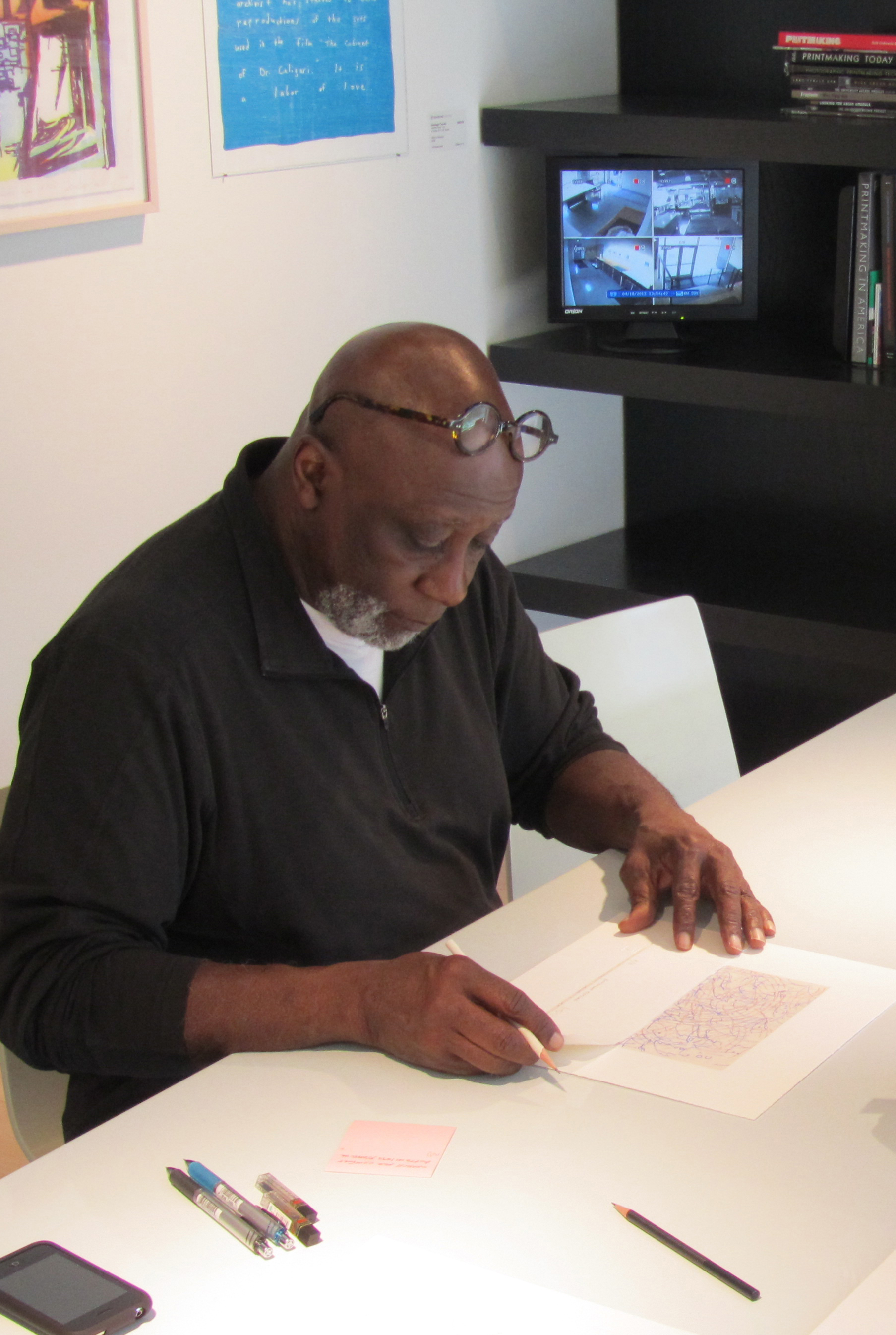
Born 1950, Philadelphia, Pennsylvania
The templates, compasses, and other tools Clarence Morgan uses for his geometry-filled art hark back to his drafting classes at various vocational schools in Philadelphia, his hometown, in the late 1960s. He was planning a career in commercial art until an instructor suggested he consider the Pennsylvania Academy of the Fine Arts. When the instructor mentioned painting, Morgan thought he meant house painting. “It shows my unawareness of the fine arts,” he says.1 He had always thought the school’s famous Frank Furness building in Philadelphia was a church. During his time at PAFA (1971–75), he moved away from the representational art espoused by the academy and began looking at the geometric abstraction and symbolism of African textiles, Navajo weaving, and Islamic architecture, among other works. In 1974 he won a traveling scholarship that allowed him and his wife, the artist Arlene Burke-Morgan (1950–2017), to go to Europe and immerse themselves in the art of Rome, Florence, Madrid, Barcelona, London, Paris, and more. “I came home thinking, OK, this is me,” he says. He enrolled at the University of Pennsylvania School of Design, earning an MFA in painting in 1978. That same year, he began teaching at East Carolina University, in Greenville, North Carolina, and in time became influential in the regional art community. In 1992, he was lured to the University of Minnesota in Minneapolis, where he is a professor of art.

Painter, draftsman, and printmaker, Morgan maintains studios in Minneapolis and Chicago. He considers each composition “an invention of its own making,” with the techniques of printmaking providing a particular “trigger” for what might be acted out in the studio. Jan Estep wrote of Morgan’s abstractions, “Discernible patterns and predictable progressions are juxtaposed with chance events and anomalous marks: rhythmic in parts, random in others.”2
Morgan has participated in more than two hundred exhibitions, including: “Our Stories: African American Prints and Drawings” (2014), Cleveland Museum of Art; “Colorblind: The Emily and Zach Smith Collection” (2012), Mint Museum of Art, Charlotte, North Carolina; “Paper Trail: A Decade of Acquisitions” (2007), Walker Art Center, Minneapolis; “A Print Odyssey” (2001), Palazzo Casali, Cortona, Italy; “International Invitational Works on Paper” (1999), University of Hawaii–Hilo; “The Next Generation: Southern Black Aesthetic” (1991), Contemporary Art Gallery, New Orleans; “NCAE Survey of Contemporary Art” (1990), North Carolina Museum of Art, Raleigh; and “Masters of Color” (1987), Fleming Museum of Art, University of Vermont, Burlington. Morgan has been a frequent panelist, juror, and lecturer, and a visiting artist at Yale, Stanford, Oregon State, Michigan State, Indiana, James Madison, and Brigham Young universities; York College of Pennsylvania; Cooper Union, New York; and other schools. He has been awarded funding from, among others, the Jerome Foundation, Bush Foundation, Southern Arts Federation, McKnight Foundation, Minnesota State Arts Board, and Art Matters. In 2012, the Pennsylvania Academy of the Fine Arts awarded him its Distinguished Alumni Award.
—Marla J. Kinney